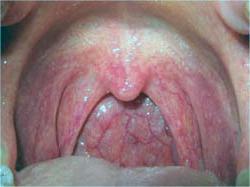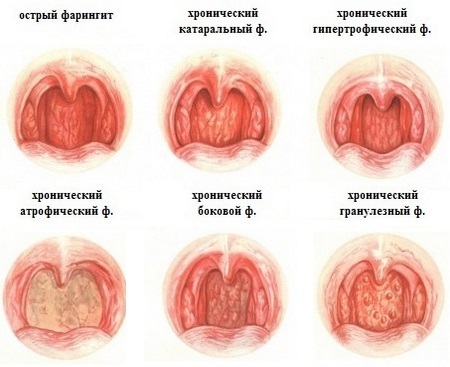Urolithiasis disease- urolithiasis,in catsand, more rarely -catsIs a common and dangerous disease. The high mortality of animals confirms this fact. The disease is characterized by the presence of sand and stones in the urinary tract and organs of the genitourinary system - the kidneys, ureters and the bladder.
Today we will talk about the treatment of urolithiasis in cats and cats at home, consider the symptoms and signs of the disease, how to help a cat or a cat than to feed them - a diet.
CONTENT
Cats at risk
According to practice, cats aged 5 years and more often suffer from urolithiasis.
The risk group includes:
- males;
- age category 2 - 6 years;
- obese animals;
- long-haired breeds;
- males after sterilization.
Moreover, urolithiasis is considered a disease of cats, since females have a wider urethra, the risk of the appearance of pathology is lower.
The disease is often genetic, occurs chronically, with the emergence of acute relapses.
The latent current can last up to 2 years, after which there is an exacerbation and it is difficult to do without surgery.
Causes of stone formation
The causes of the appearance of sand and stones depend on certain internal and external components.
External causes
- climatic conditions- how hot it is in the house, urine acquires a greater concentration and its filtration by the kidneys becomes complicated;
- quality of used liquid- the presence of salts in water leads to their accumulation in urine and the formation of stones;
- food- the lack or excess of proteins in food leads to a rapid concentration of urine;
- hypovitaminosis, beriberi- lack of vitamins worsens the nutrition of the epithelium, accelerates its destruction.
Internal causes
Predisposition to urolithiasis can be transmitted genetically.
Factors acting from within the body are called internal or endogenous. These include:
- hormonal disorders;
- feature of anatomy;
- disorder of the gastrointestinal tract;
- heredity;
- infections, viruses.
Causes of urolithiasis in cats
 Urolithiasis in cats: symptoms and treatment at home, diet
Urolithiasis in cats: symptoms and treatment at home, dietThe formed stones, basically, are of two kinds: struvite and oxalate.
The most common cause of development of urolithiasis is a metabolic disorder.
Minerals that enter the body of the cat react with the slag. Bending cells of the bladder become the centers of appearance of crystals. Passing through the urinary canals, the crystals injure their mucous membranes. Excessive number of such crystals - the reason for the blockage of the lumen, the interference of the yield of urine. Kidneys continue to produce urine, but it accumulates in the lumen, which causes poisoning of the whole organism, leading to severe intoxication.
The peak of the disease falls on autumn and spring. Significant role in the appearance of pathology has the presence of inflammatory processes in the kidneys, liver, gastrointestinal tract.The consequence of these processes can be the formation of crystals. Individual predisposition is also a significant factor in the development of the disease.
Features of anatomy - too narrow a lumen of a urethra which complicates a conclusion of a liquid, forming "congestion".
Symptoms and diagnosis of urolithiasis
 About the symptoms and treatment of urolithiasis in cats and cats at home
About the symptoms and treatment of urolithiasis in cats and cats at homeDiagnose the presence of stones or sand in the laboratory, but at home, you can make a preliminary diagnosis on some grounds.
- The cat often urinates, sometimes uncontrollably, sometimes with difficulty and small portions.
- During urination behaves uneasily.
- Urine darkens, acquires a reddish hue or contains blood.
- The animal tries to move less, refuses food, water.
- Due to the small waste of urine, the stomach becomes larger.
- There is an intoxication of the body, vomiting begins.
- The temperature rises to 39-40 degrees. It is aggravated by convulsions, trembling of the whole body.
Such symptoms indicate a prolonged illness, not less than 1-2 years. It is important not to tolerate severe forms, constantly undergo veterinary inspection, otherwiselethal outcome is 80%. With a timely diagnosis and treatment, the prognosis is favorable. A full clinical picture is made by a veterinarian on the basis of visual examination and laboratory tests.
Treatment and diet for a cat
Therapy of urolithiasis is performed in a complex way, using radical methods in the form of surgical removal of stones and cleaning the urinary tract from the sand.
The period of treatment is complex and lengthy, requiring considerable effort from the attending physician and the owner of the cat. The first emergency aid is the possibility of free urine output. Enter the catheter through the ducts into the bladder, under general anesthesia. The difficulty of entering a catheter is an indication for an immediate operation, during which a catheter is inserted and left for 1-2 weeks.
Intensive treatmentimplies the use of symptomatic therapy: pain killers, antispasmodics. Anti-inflammatory, antibiotics, immunostimulants, diet. Along with the use of drugs with a narrow focus, they show drugs that support the work of the cardiovascular system, the gastrointestinal tract. Using a dropper, compensate for the lack of fluid and blood.
Medications
Drugs often used in the treatment of ICD with the ability of patency of urine: pills nitroxoline, phytoelitis "Healthy kidneys", solution of phytolysin, neurovital tablets, injections of baralgina.
In more complex cases, with surgical treatment, therapy is shown: injections of amoxicin, baralgina. Inside - phytoelitis "Healthy kidneys", phytolysin. Catheterization is carried out using an anesthetic duo in the form of xylazine, ketamine.
To clean and prevent infection, a metragyl solution with saline is injected into the catheter. During the rehabilitation period, general restorative therapy is required. Apply kotorvine, nefroket, rennal powder, suspension or tablets "Stop-cystitis", tablets "Urinari tract caliper."
What to feed the cat with urolithiasis at home
The purpose of the diet for urolithiasis depends on the type of stones in the genitourinary system of the animal.
The presence of oxalates precludes the ingestion of oxalic acid into the body. It is found in the liver, kidneys, tea. Restriction is subject to food containing calcium: dairy, sour-milk products.
In veterinary hospitals they sell special fodders for cats that are sick with urolithiasis.
Recommendedsaturate the body with alkali, which is found in beets, legumes, and cauliflower. Showing products,rich in magnesium: peas, boiled meat, fish, rice, other types of cereals. To exclude absolutely dry forage, to use meat and fish canned food.
Defeat by struvite
Defeat struvites implies the exclusion of food saturated with calcium and its compounds. This group includes: dairy and sour-milk products, egg yolk.
Recommended: boiled beef meat, egg white. In the diet can include: young veal boiled rice, carrots.
Diluted is allowed: oatmeal, liver, cabbage. Use canned meat and fish food.Dry food - only medicinal, with the presence of useful additives for the cat. Diet diet should be agreed with the doctor and strictly adhere to the regime and the norms of feeding.
Throughout the rehabilitation period, periodicallylaboratory urine test, exercise strict control of the animal's well-being. Combination of ready dry or canned food in one dish with home-made food is strictly prohibited.
Prevention of urolithiasis in cats
A complex of preventive measures of urolithiasis of cats is available to everyone. It is necessary to monitor the quality of the pet's food, its quantity. Overeating is fraught with an increase in alkali in the urine. Insufficient intake of calcium in the body contributes to the formation of phosphate formations, so it is important to moderate food intake, rich in calcium compounds.
To control the drinking of a cat. The water must be purchased, soft or boiled and stand-by. Do not use dry food as the main food - only as complementary foods, if possible, its complete exclusion from the diet.
Lure with dry food should be provided with a sufficient amount of water. Feed the animal not only with solid food. Add soups and liquid porridges to the diet. Keep your pet in good hygienic conditions, avoid the occurrence of other infections.
To avoid the appearance of urolithiasis or its recurrence, compulsory medical examination is indicated. Being in safe conditions, the animal has a minimum of risks of genitourinary system pathology.
The first days after the operation
The first few weeks after the operation, strict animal quarantine is required. Balanced diet, prohibition to leave the house, contact with other animals. Do not allow "accidental" food, food outside the regime. Do not miss the mandatory medication, shown for rehabilitation.
Related Videos
5 main causes of urolithiasis in a cat
On the treatment of a cat: advice of a veterinarian
A source:
- Video on the topic.
- Site of Maikoshka.ru -http://mykoshka.ru/lechenie-mochekamennoj-bolezni-u-kotov/



